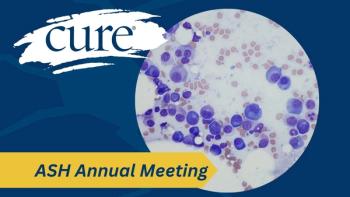
Jim's Journey With Multiple Myeloma Continued
Editor’s Note: This piece was submitted by a contributing writer and does not represent the views of CURE Media Group.
Jim and Kathleen have come a long way since they first heard the words “
Thankfully for Jim, treatments, including two autologous transplants and an allogeneic transplant in 2001 with stem cells donated by his sister, Becki, helped him outlive the initial predictions. But in 2002 Jim had a very high fever. His kidneys were shutting down and he couldn’t eat. When his local doctor told him to go to a hospice, Jim and Kathleen refused. They drew upon knowledge gained at earlier second opinion visits to the Mayo Clinic where Dr. Phil Greipp told them about a promising clinical trial. That led that led to a nine-month stay at the Dana-Farber Cancer Institute in Boston where Dr. Paul Richardson was leading a trial on a new agent called PS341, or as know it today, Velcade (bortezomib). Jim’s success with the drug was integral to its approval. He later took part in one of the trials leading to the approval of Revlimid (lenalidomide). He has been in six clinical trials to date.
Jim’s early myeloma treatments likely caused a secondary cancer, AML, which led to a 75-day hospital stay in late 2012. His doctor located a bone marrow donor on the Be The Match registry. Some doctors did not think Jim could survive a fourth transplant, but when they learned he cycled 328 miles in four days two months earlier, they decided he was strong enough to survive the transplant.
The POHR saved his life. He received an allogeneic transplant using cells donated by a woman in Germany. “This explains my desire to go to Octoberfest,” Jim said.
Jim encourages others to ask friends to go to Be The Match and register as a bone marrow donor.
Has he ever thought about giving up? “Yes, at diagnoses,” he admitted, “But as I looked back on my life, I realized that other setbacks I’ve faced have turned into something positive. Good things can happen from a setback.”
In Jim’s case, the obstacles haven’t been easy; they never are for patients facing a myeloma diagnosis. The lessons he learned apply to everyone facing cancer. Take care of yourself first.
You just have to be willing to take that first step: sitting up, taking a walk or doing any exercise that supports your health and improves your outlook. By doing so, you can help not only yourself, but also others—many others you will never know—through acts like taking part in clinical trials and reaching out to others to share your experiences.
Does Jim consider himself lucky to have survived stage 3 myeloma for 24 years? Yes, but he recalls a legendary golf instructor’s advice about luck. When a top golfer is facing a very long putt, he would be lucky to make the putt in one stroke. The golfer has to hit the ball hard enough to get it to the hole, and thereby give luck a chance to happen.
“This is what Kathleen and I have done—we do all we can to give luck a chance to happen,” he said.
Author’s Note: if you would like to contact Jim, you can reach him at [email protected].




